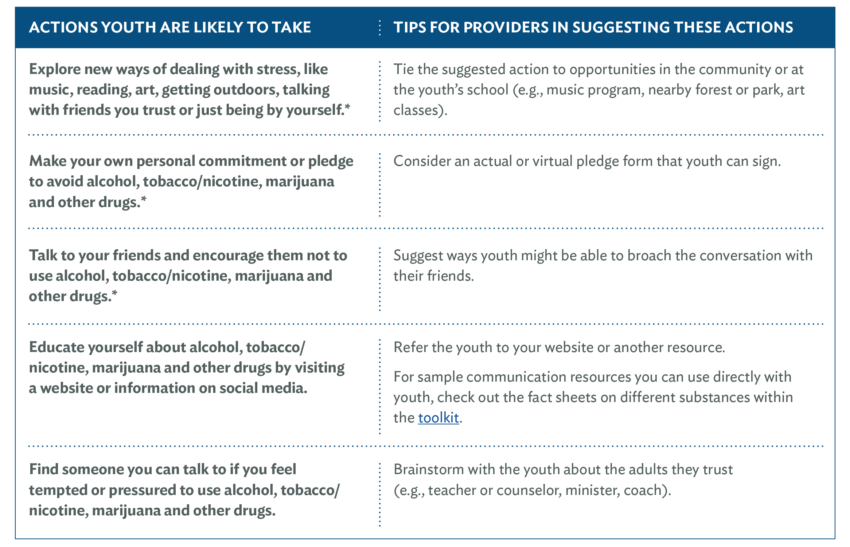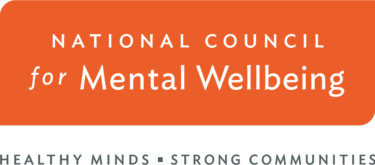5 – Suggest Action
Ideally, any prevention conversations should end with the suggestion of a next step or action youth can take. The following actions were identified by youth as those they would most likely take:

Referring Youth to Additional Services

Use the warm handoff guide below to learn about the different approaches to successful referrals. A warm handoff is a transfer of care from one healthcare provider to another that happens in front of the youth and ensures that they have the opportunity to meet the new provider and ask questions. Warm handoffs ensure that youth are directly connected to ongoing care and/or services, and do not “fall between the cracks.”
Use the Resource Referral Worksheet to identify local referral partners, so you are ready to link the youth you serve to care should and when the need arises. The worksheet includes a downloadable form for sharing referral information with youth and their families.
This project is supported by the Centers for Disease Control and Prevention (CDC) of the U.S. Department of Health and Human Services (HHS) as part of a financial assistance award totaling $1,500,000 with 100% funded by CDC/HHS. The contents are those of the author(s) and do not necessarily represent the official views of, nor an endorsement by, CDC/HHS or the U.S. Government.
